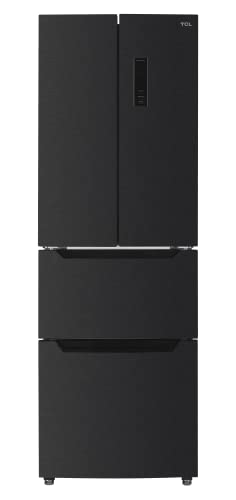An Easy-To-Follow Guide To Choosing Your Fridges And Freezers
Understanding Fridges and Freezers: The Essential Kitchen Appliances
Refrigerators and freezers are 2 of the most vital appliances in contemporary kitchens. These devices serve a vital role in food preservation and waste reduction by guaranteeing that perishable items remain fresh and safe for intake. Fridges And Freezers explores the numerous kinds of fridges and freezers, their performances, and crucial considerations for choice and upkeep.
Types of Refrigerators
The marketplace offers a range of refrigerator types, each designed to satisfy different consumer needs. Below is a list of the most typical kinds of fridges:
Top-Freezer Refrigerators
- Most common type.
- Freezer compartment is located above the refrigerator section.
- Normally more inexpensive and energy-efficient.
Bottom-Freezer Refrigerators
- Freezer is situated at the bottom.
- Permits much easier access to fresh items at eye level.
- Frequently features pull-out drawers for much better organization.
Side-by-Side Refrigerators
- Refrigerator and freezer sections are nearby.
- Suitable for narrow cooking areas and permits simple access to both compartments.
- Frequently comes with water and ice dispensers.
French Door Refrigerators
- Combines a bottom freezer with double doors at the top.
- Deals adequate storage and trendy designs.
- Typically consists of features like temperature-controlled drawers.
Compact Refrigerators
- Smaller size perfect for limited areas.
- Commonly used in dorm spaces, studio apartments, or as secondary fridges.
Table 1: Comparison of Refrigerator Types
Type
Benefits
Disadvantages
Normal Size
Top-Freezer
Budget-friendly, energy-efficient
Less convenient access to the freezer
14-30 cu. ft.
Bottom-Freezer
Easier access to fresh food
Freezer can be more difficult to arrange
19-30 cu. ft.
Side-by-Side
Easy gain access to, water/ice dispenser
Narrow vs. storage area
22-30 cu. ft.
French Door
Elegant, large, arranged
More costly
20-30+ cu. ft.
Compact
Space-saving, portable
Limited storage
1.7-5.5 cu. ft.
Types of Freezers
Freezers are a similarly essential appliance for food preservation. They can be found in various designs developed to fit various home requirements. Consider the list below types:
Upright Freezers
- Run like a standard refrigerator with vertical storage.
- Simpler to arrange with shelves and compartments.
Chest Freezers
- Large, horizontal style typically offering more storage space.
- Maintains temperature levels much better during power failures.
- More energy-efficient than upright models.
Portable Freezers
- Compact units ideal for outdoor activities or small spaces.
- Often utilized for camping journeys or as short-lived storage.
Table 2: Comparison of Freezer Types
Type
Benefits
Drawbacks
Typical Size
Upright Freezer
Easier to organize
Less energy-efficient, more flooring space
5-20 cu. ft.
Chest Freezer
Holds more items, energy-efficient
Harder to arrange
5-25 cu. ft.
Portable Freezer
Compact and flexible
Restricted storage capability
1-10 cu. ft.
Key Features to Consider
When selecting a fridge or freezer, consumers ought to remember a number of features that can boost functionality:
- Energy Efficiency: Look for models with the ENERGY STAR certification to save on electrical energy bills.
- Storage Capacity: Evaluate storage needs based upon household size and consuming routines.
- Temperature Control: Some home appliances provide digital controls for accurate temperature level settings.
- Adjustable Shelving: Customizable shelving permits ideal organization.
- Water and Ice Dispenser: Offers convenience but can take up valuable area inside.
- Noise Level: Sound scores can affect convenience, specifically in open-concept homes.
Advantages and disadvantages of Having a Fridge and Freezer
While fridges and freezers are important innovations, they likewise have certain advantages and downsides:
Pros
Cons
Maintain food lifespan and reduce waste
Need routine maintenance
Allow bulk buying and meal prepping
Can be pricey to purchase and run
Deal convenience and quick access to food
Occupy considerable kitchen area space
Upkeep Tips
To ensure longevity and optimum efficiency of fridges and freezers, think about the following maintenance ideas:
- Regular Cleaning: Clean the exterior and interior occasionally to prevent buildup of dirt and germs.
- Check Seals: Inspect door seals routinely for leakages to keep effectiveness.
- Temperature Settings: Keep the fridge at 34-38 ° F and the freezer at 0 ° F for optimum food conservation.
- Defrost as Needed: Chest freezers ought to be defrosted frequently to preserve performance.
- Clear Air Vents: Ensure that airflow isn't blocked to enhance energy performance.
Frequently asked questions About Fridges and Freezers
Q1: How long can food be stored in a freezer?A: Most foods can be kept in a freezer for a number of months. Cheap Fridge Freezers For Sale and poultry frequently last 4-12 months, while vegetables can last up to 8-12 months.
Q2: How typically must I clean my fridge and freezer?A: It is suggested to clean your fridge and freezer every 3 to 6 months, or as required when spills happen. Q3: Can I put hot food straight in the fridge?A: It is recommended to cool hot food to room temperature level before putting it in the fridge to avoid
raising the temperature level inside the appliance. Q4: Why is my fridge running constantly?A: This might be due to a malfunctioning thermostat, stopped up coils, or door seals that aren't working appropriately. Fridges and freezers are vital
assets to modern-day homes, supplying vital services for food storage and preservation.
Understanding the numerous types, functions, and upkeep requirements can assist consumers pick the right appliances for their requirements and maximize their performance. Where To Buy A Fridge -efficient designs not only supports sustainable practices but also adds to considerable savings on energy expenses, making notified options more vital than ever. 